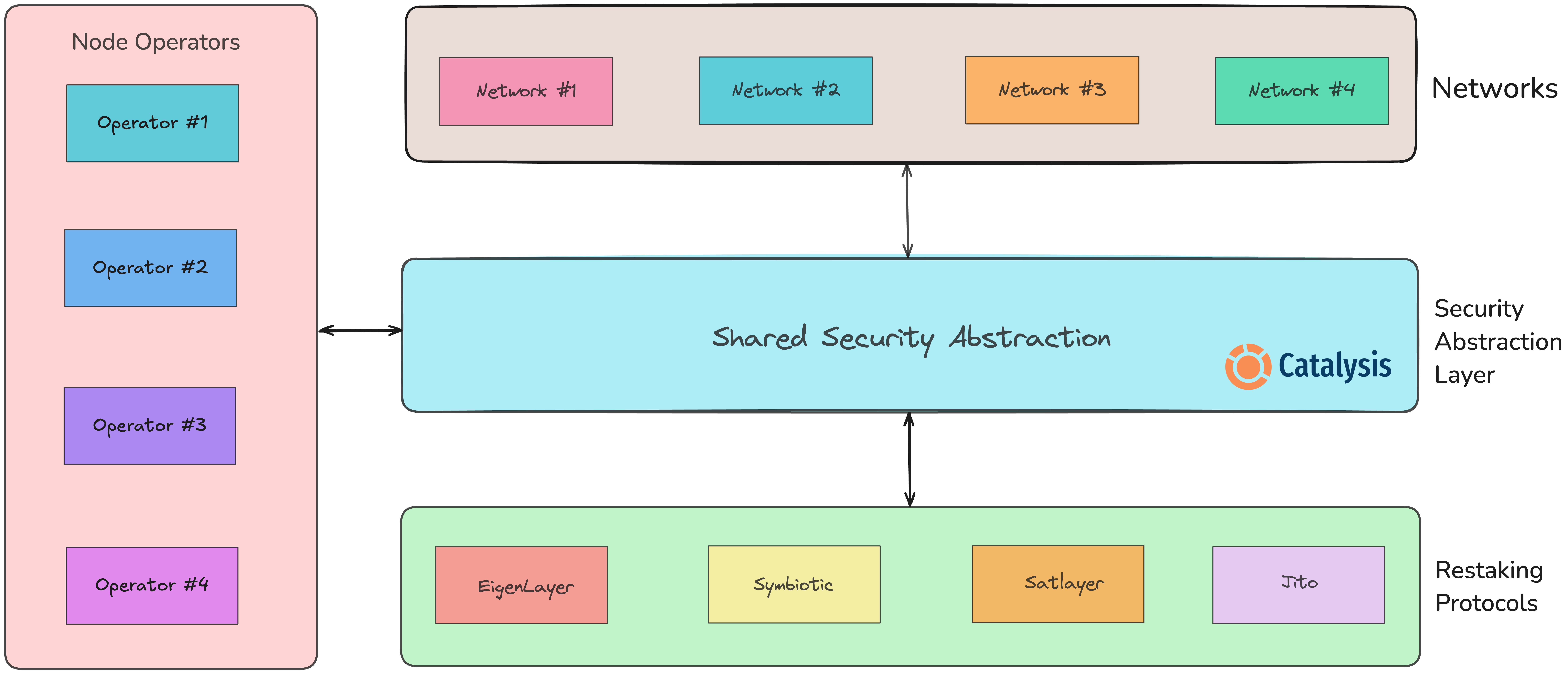Intro to Catalysis
What is Catalysis?
Catalysis is the first Security Abstraction Layer that unlocks Unified Access to $20B+ ETH, BTC & SOL-backed economic security across restaking protocols.
By abstracting away integration complexity, Catalysis gives developers a single interface to seamlessly build next-generation applications powered by restaking, without worrying about the underlying infrastructure.
Why build with Catalysis?
Shared security protocols like EigenLayer, Symbiotic and Satlayer have unlocked a new paradigm for decentralized infrastructure by making it easier to bootstrap decentralized networks (AVSs). However, launching and managing an AVS remains complex and resource-intensive.
Teams must navigate a wide range of challenges. This includes integrating with restaking protocols, configuring slashing and reward mechanisms, managing a node operator set and ensuring cross-restaking protocol composability.
Catalysis eliminates these barriers, making it easier, faster and more cost-efficient to build and operate AVSs.
The key benefits of building an AVS using Catalysis include:
- Multi-Ecosystem Security: Seamlessly integrate restaking protocols across major PoS chains like Babylon (Bitcoin), Ethereum and Solana.
- Accelerated GTM: Launch faster with developer-friendly SDKs, clear documentation and up to 80% savings on AVS development costs.
- Unmatched Economic Security: Tap into $20B+ in combined TVL across restaking protocols - ensuring your AVS has the strongest possible security guarantees.
- Resilient Infrastructure: Spread risk across multiple restaking protocols, ensuring your AVS is robust and reliable even in adverse conditions across the restaking ecosystem.
- Composability at Scale: Unlock composable, interoperable crypto-economic security across restaking protocols.
- No Vendor Lock-In: Stay flexible with modular integrations, enabling your AVS to expand beyond one ecosystem.
- Dynamic Security Rebalancing: Real-time control to allocate and rebalance security across restaking protocols with a single unified interface.
It isn't just about simplifying AVS development - it’s about unlocking the full potential of shared security.
Catalysis Architecture Overview
The Catalysis Network is built on three core components:
- Networks – Decentralized services, protocols and applications (AVSs) that leverage shared security for verification and decentralization.
- Node Operators – Entities that run network software, perform validation tasks and secure them using the Catalysis stack through restaking protocols.
- Restaking Protocols – Also known as shared security protocols, these allow stakers to restake assets (LSTs, ERC-20s, etc.) to provide security for network validation. They function as a marketplace, connecting networks, node operators and stakers.
